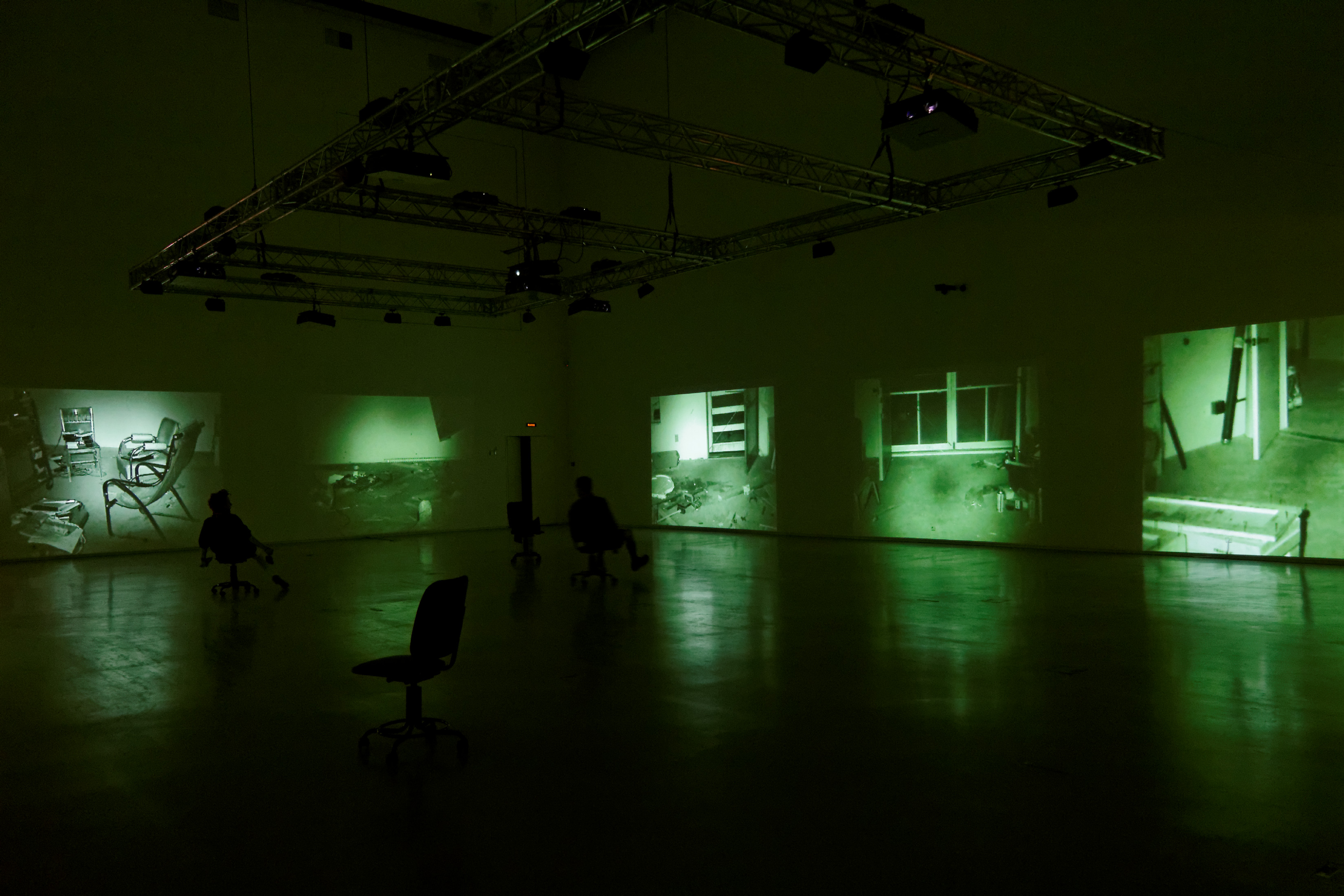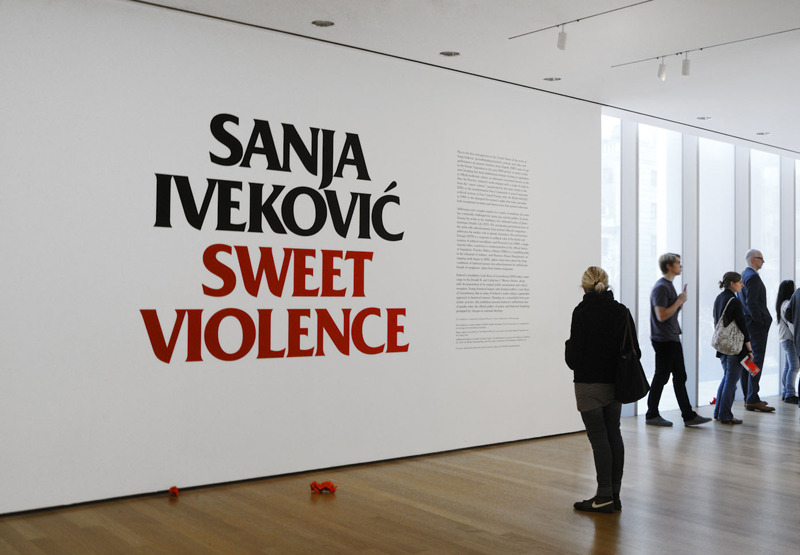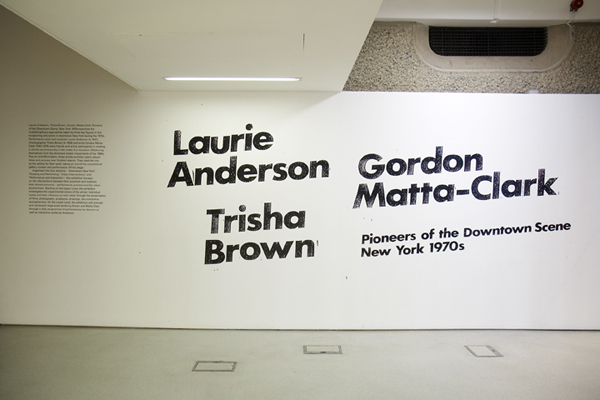Assignment 04
Exhibition Identity & Publication
Visit a museum or gallery. Take a walk around and find something that gets you excited. Note the artist, and try to find as many pieces in the location by that person. You’re to design a solo exhibition for this artist. You’re the designer & curator. You decide what the show is called, what pieces are in the exhibition, and what the identity and supplemental materials look like.
Our main reading for this assignment is James Goggin’s essay titled “The Matta Clark Complex”. James discusses book design and materiality using American artist Gordon Matta–Clarke as an example.
This assignment is about your identity system; But it’s really about typography. Your identity should support the work in question. It should not imitate it. It should not crowd it. It’s your job to find that balance, or more importantly what that balance means to you.
Deliverables
1Research Presentation
2Exhibition Identity
—Graphics applied to wall
3Exhibition Publication
—Foreword required, minumum 15 pages
—Feature 20+ pieces of artists artwork
4Exhibition Poster
—24×36"
Research Presentation
Show your research in the form of presentation slides. Keep your presentation around 3 minutes. Show some work your selected artist has made, possibly photos you’ve taken.
Exhibition Identity
You are to create an identity for your exhibition. The identity should consist of a wordmark, featuring the title of the show and the artists name. Building on the wordmark, you are to develop a typographic system for the identity. What will the body text of the publication be set in? What will work for captions? Apply (photoshop) your graphics on the wall of the exhibition for context.
Exhibition Publication
You are to create a publication for your exhibition. It can be any size or material you would like, but it must be printed. It should include at least 20+ pieces of artwork. It should include a foreword about the artist, minimum 15 pages. Find an essay, interview, review of their work, a show, or some other longform piece of writing about the artist and use that for your content. This piece of writing should not be their wikipedia page, or their biography. It should be a text examining the work or artist in question.
Exhibition Poster
You are to create a poster for your exhibition. It’s dimensions are 24×36". Imagine this poster would be wheatpasted around New York, or as an advertisement in the subway.
Timeline
Week 7—10.23.18
Research
Visit the Museum/Gallery. Show your research in the form of presentation slides. Tell us about who your artist is, what you like about their work or what you find interesting about them as a person.
This is not a book report. This is a documentation of your experience. Design it, make it entertaining for us. It should not be dry or boring. It should be inciteful and personal. Your presentation must answer the following questions, at least one slide per question—
1Who are they?
2What is their background?
3Where did they come from/what’s their story?
4What themes are present in their work?
5What context was the work shown?
6What drew you to what they’ve made?
7How do you plan to move forward?
Address some formal or conceptual routes you are considering exploring for the identity, either with sketches and typeface choices or a few sentences/word associations.
Week 8—10.30.18
Group Crit
Have one to three directions you’re considering. Decide on a name and show it’s wordmark. Show us a few spreads of your publication, and a few different composition sketches for your poster on 11×17". Start thinking about the typographic system and how your interpretation of the exhibition translates to layout and materials.
Week 9—11.6.18
One-on-ones
All deliverables required to show in as close to final form as possible. Have a dummy book to scale, loosely bound. Bring an example of paper stocks and cover options you’re considering. Have your poster tiled as 24×36" (can be roughly produced).
Week 10—11.13.18
Guest Crit
All deliverables required in full, final production form.

Background
It’s not required, but I highly recommend visiting Dia:Beacon. It’s an 80 minute train ride outside the city. Either go with a friend, or even better, alone. Their permanent collection of 60’s to now modern art is incredible, and there are plenty of artists you can explore for this project. DIA’s galleries are specifically designed for the presentation of one artists work, so you’ll see more than one of their pieces in person. Plus, photography is allowed so it’s an easy way to gather content and own the photos you’re using in the project (just dont bring a tripod).
Dia:Beacon Hours
April–October
Thursday–Monday 11am–4pm
Closed Tuesdays and Wednesdays year-round
Take the Metro North at Grand Central Terminal, which costs $36.50. If you get a package with your Metro North ticket admission into the museum is only $6. But the museum is amazing! and the town is nice! Especially if you’ve never visited upstate before! Seriously, really try to get there, it will be worth it. Give yourself as much time as possible.
More Tips
If possible, photograph the work. You will need either your own photographs or images you find through your research for this project. Also photograph the work within the space. Take wide shots with blank wall space and some of the artwork in context (if applicable). This will give you the opportunity to see what your exhibition graphics would look like in a gallery living next to the artwork it’s introducing.
It might make sense to choose an artist who’s established and has produced a larger body of work. This will make your research phase much easier. If there is already professional photography of the work in question it will make gathering content for your publication easier. You want to focus your efforts on design, not production. If there is already essays or critical analysis of the person this will give you an opportunity to learn more about your subject, where their work lives on a timeline, and how it has affected culture, and give you content for your foreword.





